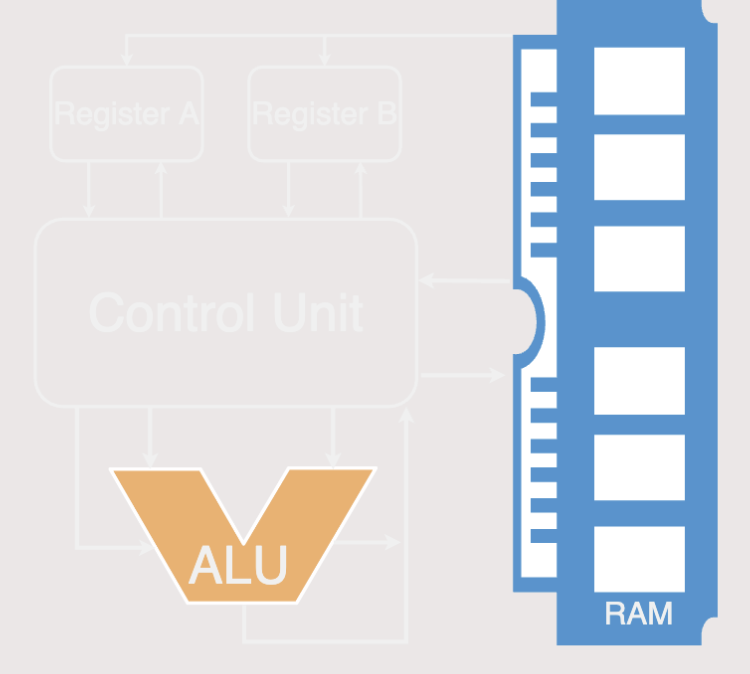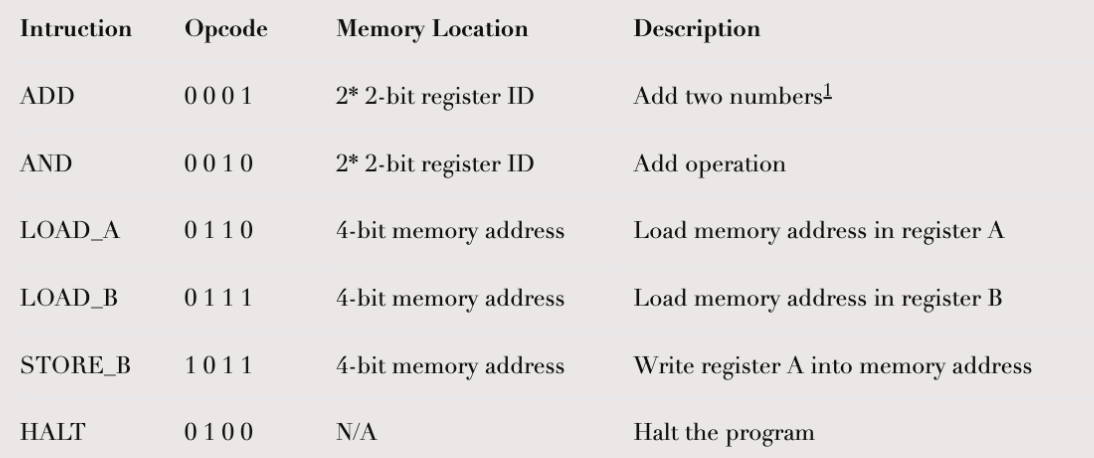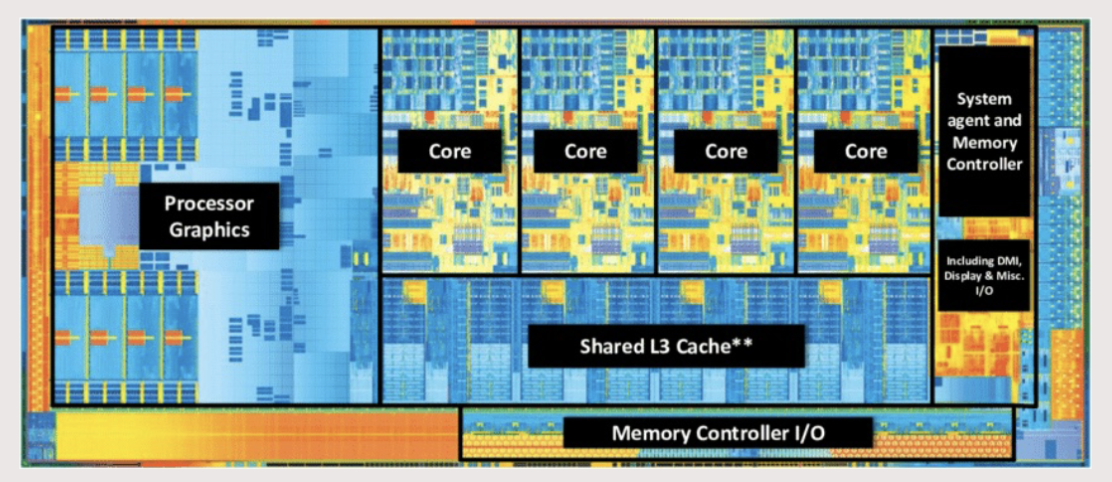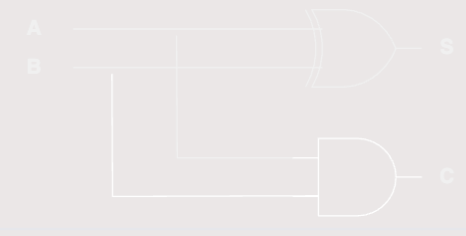Exam info
Most important is:
- Binary number system (and conversion)
- What CPU is and how it works
- Basic computer components
Lecture notes
Initial terms
- Transistors → Can amplify or switch eletronic signals and eletrical power. Made from semiconductors. They can control flow of electricity by applying a small input signal
- Collector → collects the current
- Base → receives the input signal which turns on/off the switch
- Emitter → where the current is released if the base receives an input
- Current → flow of eletric charge through a current, measured in Ampere. In CS we consider the states when the current flows (1) or when it doesn’t (0)
- Circuit → Multiple transistors mixed together
- Gate → combined circuits/transistors
- AND ( ) Gate → Both input need to be true
- OR Gate () → Either input must be true
- XOR Gate ( )→ Accepts only one true input →
- NOT ( ) → inverts the input
Abstraction in hardware design
Binary number system
- Half adder → doesn’t account for the carry bit
Arithmetic logic unit
Abstraction of basic circuits → Somewhat smarter than normal circuits ALU does not have excess memory → it cannot store the processed information
- Opcode (Operation code) → type of operation we want to perform
- Status → whether the operation was successful
- Result → Result of the operation
- A & B → the two inputs of the operation
Exam info
Most complicated in the exam will be basic combinational circuits such as XOR (slide 19)
Central processing unit

- Arithmetic logic unit
- Random Access Memory → stores data and instructions that the CPU accesses during execution. Volatile memory.
- Registers → Temporary memory that CPU’s have direct access to
- Control unit → Receives instruction from memory and controls flow of data within the CPU. Interprets the Opcode to determine the operation to be performed by ALU or memory
Instructions set and machine code


- ==Instruction set== → Collections of instructions that the CPU can execute. Operations that you can perform on the computer. They are identified by a certain Opcode.
- RISC → Reduced Instructions Set → mostly in phones, low computational power
- CISC → Complex Instructions Set
Moore’s Law
Moore’s Law
The number of transistors in a dense integrated circuit doubles about every two years.
- We are reaching a physical limit in Moore’s law
CPU components

- L3 memory cache
- integrated graphic processor
- Memory controller
- System agent/platform I/O
